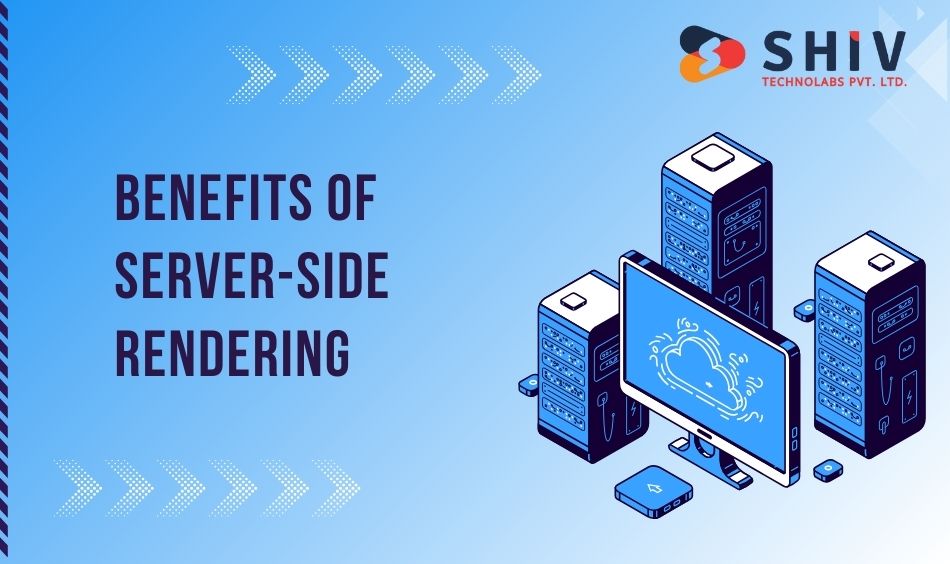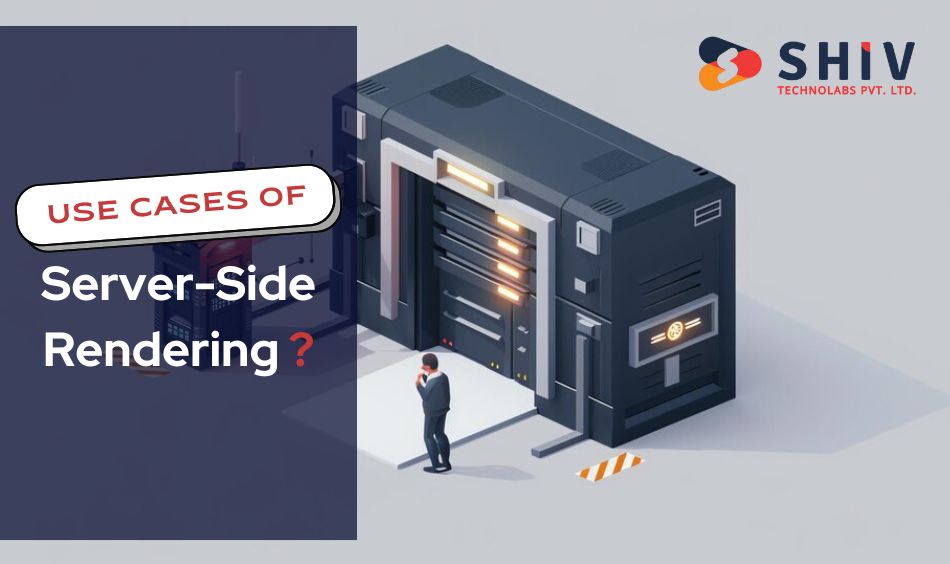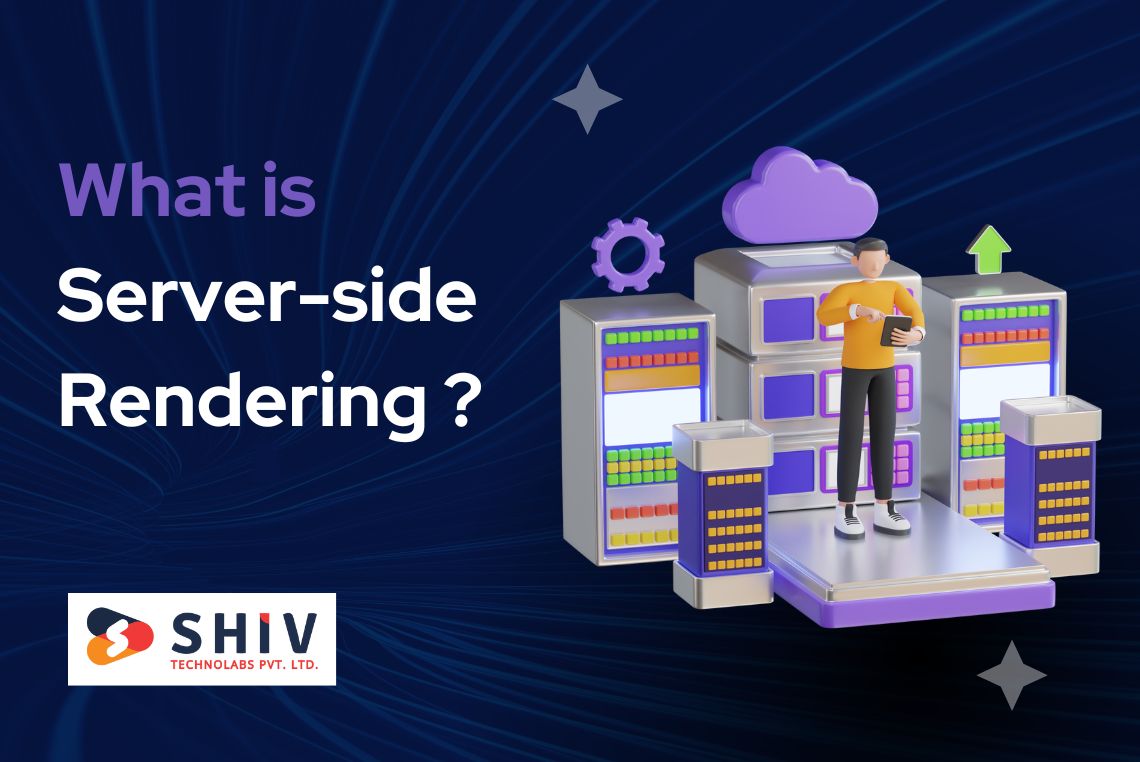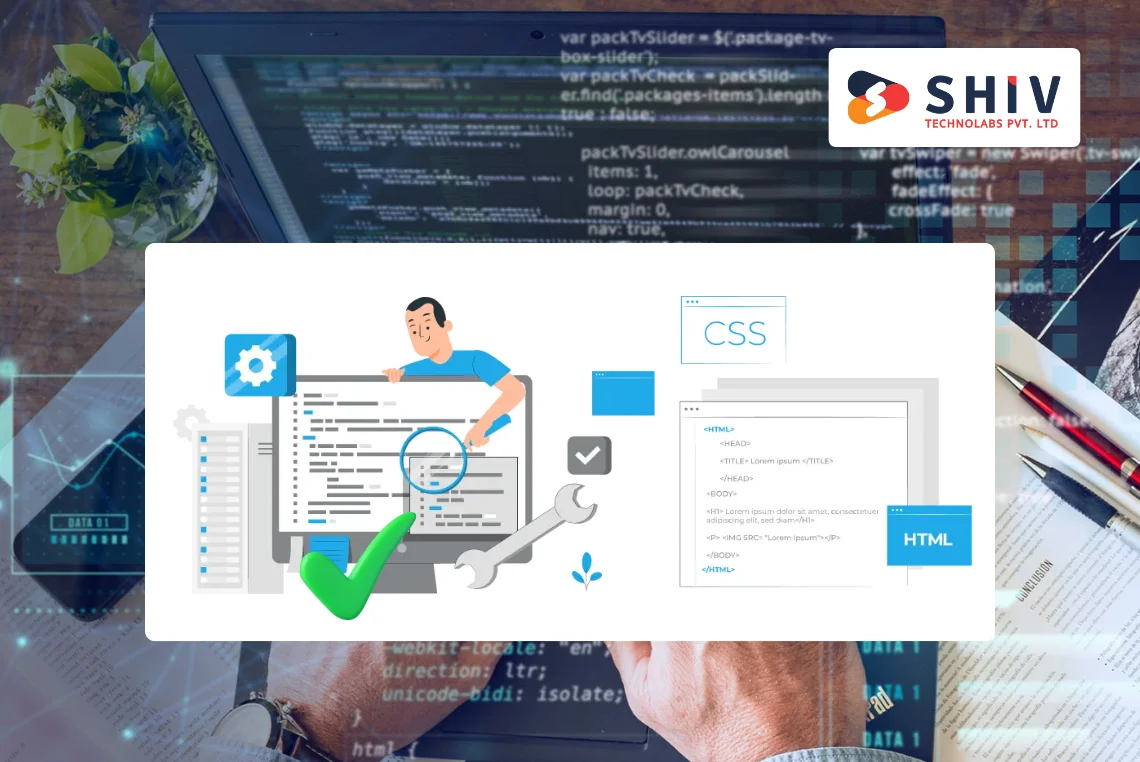Table of Contents
In the ever-evolving digital world, creating web applications that perform well and meet user expectations is a top priority. One crucial technique in achieving this is Server-side Rendering (SSR). SSR can significantly affect how a website loads and interacts with users, impacting everything from page load times to search engine optimization. This guide will break down what SSR is, how it functions, and why it matters for businesses aiming to improve their web presence.
What Is Server-Side Rendering?
Server-side Rendering is a method where the server generates the full HTML for a web page before sending it to the browser. Instead of the browser executing JavaScript to build the page content dynamically, the server pre-renders the HTML and sends a fully-formed page to the client. This approach contrasts with client-side rendering, where the browser handles most of the page construction after receiving a minimal HTML shell. SSR aims to deliver a complete and ready-to-view page directly to the user, often resulting in faster initial load times and improved performance metrics.
# How Server-Side Rendering Works
The process of Server-side Rendering begins when a user requests a webpage. This request is sent to the server, which processes it by executing the necessary server-side code and fetching the relevant data. For applications built with React JS, this often involves rendering components on the server to deliver the initial HTML content. The server then generates the HTML for the requested page, integrating the data and rendering the content in a fully-formed state.
This HTML is sent back to the user’s browser, which displays the complete page immediately. By incorporating React JS development practices, businesses can further refine the server-side rendering process, ensuring that dynamic content and interactive features are effectively handled.
Here’s a more detailed breakdown of the SSR process:
- User Request: A user initiates a request by entering a URL or clicking a link. This request is sent to the server hosting the web application.
- Server Processing: Upon receiving the request, the server runs the server-side logic, which includes retrieving data from databases, running business logic, and processing templates. This stage may involve fetching user-specific content or performing calculations based on the request.
- HTML Generation: After processing, the server generates the complete HTML for the page. This HTML includes all necessary content and layout, fully assembled and ready for display.
- Response Delivery: The generated HTML is sent back to the user’s browser as a response to their request. The browser receives this HTML and renders the page without requiring additional client-side JavaScript processing.
- Page Display: The user sees the fully-rendered page almost instantly. If client-side JavaScript is involved, it may still run in the background to enhance interactivity or load additional dynamic content after the initial render.
Benefits of Server-Side Rendering

- Faster Initial Load Times: Server-side rendering sends a fully-rendered HTML page to the browser, significantly reducing the time users wait to see content. This is because the server prepares the HTML content before it reaches the client. As a result, users experience a more immediate display of the page, which can be crucial for retaining visitors and reducing bounce rates. By minimizing the need for JavaScript to build the page, SSR can offer a quicker perceived load time, leading to a more satisfying user experience.
- Improved SEO: Search engines index pages based on the content they find in the HTML. With SSR, the server provides a fully-rendered HTML page, making it easier for search engine crawlers to read and index the content. This can lead to better search engine rankings since the search engines do not need to execute JavaScript to render the page. Enhanced visibility in search results can drive more organic traffic to the site, contributing to overall business growth.
- Better Performance on Low-Powered Devices: Devices with limited processing power or older hardware might struggle with client-side rendering, where the browser needs to execute JavaScript to build the page. With SSR, the server does the heavy lifting of rendering the page, reducing the processing required on the user’s device. This can lead to smoother experiences on lower-end devices, ensuring that users across various device types can access and interact with the content effectively.
- Improved User Experience: By delivering a complete HTML page from the start, users receive the content immediately without waiting for JavaScript to execute and render the page. This can significantly improve user satisfaction, particularly on slower networks or devices. The initial content load is faster, which can reduce frustration and improve engagement, as users are more likely to stay on the site if they can access information quickly.
- Consistent Rendering Across Browsers: SSR ensures that the page is rendered consistently regardless of the browser or device being used. This consistency can help in maintaining a uniform user experience across different environments, minimizing issues that might arise from browser-specific rendering differences. As a result, businesses can ensure that all users see the intended design and content, leading to a more professional and reliable web presence.
- Reduced Time-to-Interactive: By serving a complete HTML page from the start, SSR can shorten the time it takes for users to interact with the content. This leads to quicker availability of interactive elements, which can improve engagement and usability.
- Increased Accessibility: Pages rendered on the server are immediately available to users, including those with slower connections or accessibility needs. This can make the website more inclusive and ensure that content is accessible to a wider audience.
Use Cases of Server-Side Rendering

- Content-Heavy Websites: Websites that feature extensive amounts of content, such as news sites or blogs, can benefit greatly from SSR. These sites often require quick load times to ensure users can access articles and information without delay. SSR helps by pre-rendering content on the server, so users see the full page almost instantly, which is crucial for maintaining user engagement and reducing page abandonment.
- eCommerce Platforms: For online stores, SSR can improve the speed of loading product pages, search results, and category listings. Fast load times can enhance the shopping experience, reduce cart abandonment rates, and potentially increase conversion rates. SSR also helps in indexing product details more efficiently, which can contribute to better visibility in search engine results and attract more potential buyers.
- Landing Pages: Marketing and promotional landing pages benefit from SSR due to the need for immediate content delivery. These pages are often designed to capture leads or drive conversions, and quick access to the content is essential for maximizing effectiveness. By providing a fully-rendered page quickly, businesses can ensure that potential customers see the key messages and calls to action without delay.
- Dynamic Content Sites: Sites that feature frequently updated content, such as social media platforms, forums, or real-time dashboards, can use SSR to deliver the latest information to users more quickly. While dynamic content might still rely on client-side JavaScript for updates, SSR ensures that the initial load includes the most current data, improving the user experience and keeping the information relevant.
- Single Page Applications (SPAs): SPAs traditionally rely on client-side rendering, but integrating SSR can offer significant benefits. By pre-rendering the initial page load on the server, SPAs can achieve faster load times and better SEO. This approach combines the dynamic nature of SPAs with the performance advantages of SSR, leading to a more efficient and user-friendly application.
- Local News Sites: For local news sites that rely on timely updates, SSR can help deliver the latest news to users faster, ensuring that they have access to current information without delay.
- Educational Platforms: Educational websites with extensive course content or interactive learning materials can use SSR to deliver content quickly, providing students with a smoother and more efficient learning experience.
Also read : Innovative React JS Web App Solutions for Turkish Businesses
Best Practices for Implementing Server-Side Rendering
- Cache Responses: Implementing caching strategies can help manage server load and improve response times. By storing previously rendered pages or frequently accessed data, the server can quickly serve cached content rather than re-rendering it for every request. This reduces the workload on the server and speeds up page delivery, benefiting users with faster load times.
- Optimize Server-Side Code: Efficient server-side code is crucial for maintaining performance. This includes optimizing data processing tasks, reducing computational overhead, and minimizing unnecessary operations. Well-written server-side code can handle requests more quickly, resulting in faster HTML generation and a more responsive user experience.
- Prioritize Critical Content: Ensure that the most important content is rendered and delivered first. This approach focuses on delivering essential information quickly while deferring less critical content or interactive elements. By prioritizing key content, businesses can improve perceived performance and make sure users see the most relevant information without delay.
- Use Efficient Data Fetching: Optimize the way data is fetched and processed on the server. This involves minimizing redundant data requests, using efficient query techniques, and ensuring that data retrieval is fast and reliable. Effective data management can reduce the time required to generate the HTML and improve overall performance.
- Monitor and Test Performance: Regular monitoring and testing are essential to identify and address performance issues. Use tools and metrics to track server load, response times, and user interactions. By continually evaluating the performance of SSR implementations, businesses can make informed adjustments and maintain optimal performance levels.
- Implement Server-Side Caching: Use server-side caching to store rendered HTML pages or data that doesn’t change frequently. This can reduce the amount of work the server needs to do for each request and improve overall performance.
- Plan for Scalability: Design the server infrastructure to handle increased traffic and load. Consider using load balancers, scalable cloud services, and other techniques to ensure that the server can manage growing demand without compromising performance.
Also read : The Role of React JS in UAE’s Digital Transformation
What Are the Risks of Server-Side Rendering?
- Increased Server Load: SSR can lead to higher server load because each user request requires the server to generate and send a complete HTML page. This can strain server resources, especially for high-traffic sites. Managing server capacity and potentially increasing infrastructure or adopting scaling strategies may be necessary to handle the additional load effectively.
- Complexity in Setup: Implementing SSR can be more complex than client-side rendering due to the need to manage both server-side and client-side code. This complexity can lead to longer development times and increased maintenance efforts. Teams may need to invest in additional training or resources to handle the intricacies of SSR.
- Latency Issues: Despite the benefits of SSR, network latency can still affect how quickly users receive the rendered page. Geographic distance between the user and the server can introduce delays, particularly if the server is located far from the user. Utilizing Content Delivery Networks (CDNs) and optimizing server locations can help mitigate these latency issues.
- Potential for Decreased Interactivity: While SSR improves initial page load times, the interactive elements of a page might still depend on client-side JavaScript. This can lead to a disjointed experience where static content loads quickly, but interactive features are delayed. Ensuring that client-side and server-side elements work well together is important for maintaining a smooth user experience.
- SEO Risks with Dynamic Content: For sites with rapidly changing or highly dynamic content, ensuring that search engines index the most current information can be challenging. Search engines might cache older versions of pages or struggle with content that relies heavily on client-side scripts. Regularly updating sitemaps and implementing server-side rendering strategies that accommodate dynamic content can help address these SEO concerns.
- Increased Development Overhead: Managing both server-side and client-side code for SSR can increase development complexity and overhead. Teams may need to coordinate between different parts of the application, which can extend development time and costs.
- Possible Scalability Challenges: As the number of users increases, scaling server-side rendering can become challenging. Ensuring that the server infrastructure can handle growing demands without performance degradation may require careful planning and additional resources.
Conclusion
Server-side rendering (SSR) plays a pivotal role in enhancing the performance and user experience of web applications. By generating fully-rendered HTML on the server, businesses can achieve faster initial load times, improved SEO, and a more consistent experience across different devices and browsers. While SSR offers numerous advantages, including better performance for low-powered devices and enhanced accessibility, it also presents challenges such as increased server load and complexity in setup. Understanding these benefits and potential risks helps businesses make informed decisions about integrating SSR into their web development strategies.
As the digital landscape continues to evolve, embracing effective rendering techniques like SSR can provide a competitive edge by improving site performance and user satisfaction. For businesses looking to implement SSR or seeking expert advice on web development technologies, partnering with a knowledgeable provider can make a significant difference.
At Shiv Technolabs, we specialize in delivering cutting-edge web solutions that drive results and exceed expectations. Whether you are looking to integrate server-side rendering to boost your site’s performance or seeking expert guidance from a React JS development company in Turkey, our team is here to help. Based in Turkey, we offer a range of services designed to meet your unique business needs, ensuring your web applications are fast, efficient, and optimized for success. Discover how Shiv Technolabs can transform your digital presence with our expert React JS Turkey solutions and drive your business forward. Contact us today to learn more about how we can support your web development goals.



















